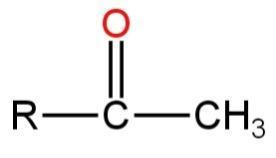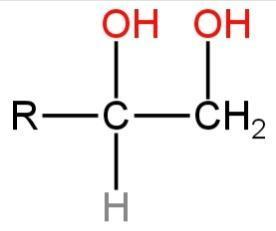
Alkene\[R - CH = C{H_2}\] reacts readily with\[{B_2}{H_6}\] and the product on oxidation with alkaline hydrogen peroxides produces
A.\[R - C{H_2} - CHO\]
B.\[R - C{H_2} - C{H_2} - OH\]
C.

D.

Answer
220.5k+ views
Hint: \[{B_2}{H_6}\] is called diborane which is one of the significant hydrides of boron. It is an electron-deficient compound thus when reacted with alkenes acts as an electrophile.
Complete Step by Step Solution:
In this question, we are given an alkene that reacts with diborane, and the resulting product will undergo oxidation.
Let us know about diborane.
Diborane has a bridge structure in which each boron atom is held by two hydrogen atoms by regular electron-pair bonds. These bonds are called terminal bonds.
Two bridging H-atoms construct bridge bonds with boron.
Alkenes react with diborane to give alkylboranes which on the oxidation with alkaline Hydrogen peroxide form alcohols.
This reaction is called hydroboration-oxidation.
Diborane forms two molecules of BH3.
In the first step,\[B{H_3}\] gets added to the double bond, replacing one of the hydrogen atoms with the carbon adjacent to the one which is bonded to the boron.
This hydroboration is done two more times making three alkenes add to each BH3.
The resulting trialkyl borane is reacted with hydrogen peroxide in the second step.
This procedure displaces the B-C bonds with HO-C bonds. The boron reagent is transformed into boric acid.
The Hydroxyl group gets connected to the less-substituted carbon. So, it is an anti-Markovnikov reaction.
The reaction happens as follows:-

So, option B is correct.
Note: All hydrogens have to get connected to boron, until it happens, the boron group \[B{H_3}\]will continue to add to additional alkenes. This implies that one mole of hydroborane will encounter the reaction with three moles of alkene.
Complete Step by Step Solution:
In this question, we are given an alkene that reacts with diborane, and the resulting product will undergo oxidation.
Let us know about diborane.
Diborane has a bridge structure in which each boron atom is held by two hydrogen atoms by regular electron-pair bonds. These bonds are called terminal bonds.
Two bridging H-atoms construct bridge bonds with boron.
Alkenes react with diborane to give alkylboranes which on the oxidation with alkaline Hydrogen peroxide form alcohols.
This reaction is called hydroboration-oxidation.
Diborane forms two molecules of BH3.
In the first step,\[B{H_3}\] gets added to the double bond, replacing one of the hydrogen atoms with the carbon adjacent to the one which is bonded to the boron.
This hydroboration is done two more times making three alkenes add to each BH3.
The resulting trialkyl borane is reacted with hydrogen peroxide in the second step.
This procedure displaces the B-C bonds with HO-C bonds. The boron reagent is transformed into boric acid.
The Hydroxyl group gets connected to the less-substituted carbon. So, it is an anti-Markovnikov reaction.
The reaction happens as follows:-

So, option B is correct.
Note: All hydrogens have to get connected to boron, until it happens, the boron group \[B{H_3}\]will continue to add to additional alkenes. This implies that one mole of hydroborane will encounter the reaction with three moles of alkene.
Recently Updated Pages
Difference Between Alcohol and Phenol: Structure, Tests & Uses

Class 12 Chemistry Mock Test Series for JEE Main – Free Online Practice

Electricity and Magnetism Explained: Key Concepts & Applications

JEE Energetics Important Concepts and Tips for Exam Preparation

JEE Isolation, Preparation and Properties of Non-metals Important Concepts and Tips for Exam Preparation

JEE Main 2021 July 25 Shift 1 Question Paper with Answer Key

Trending doubts
Understanding Centrifugal Force in Physics

JEE Main Marking Scheme 2026- Paper-Wise Marks Distribution and Negative Marking Details

Understanding Entropy Changes in Different Processes

Common Ion Effect: Concept, Applications, and Problem-Solving

What Are Elastic Collisions in One Dimension?

Understanding Geostationary and Geosynchronous Satellites

Other Pages
NCERT Solutions for Class 12 Chemistry Chapter 6 Haloalkanes And Haloarenes 2025-26

JEE Advanced Weightage 2025 Chapter-Wise for Physics, Maths and Chemistry

NCERT Solutions for Class 12 Chemistry Chapter 2 Electrochemistry

NCERT Solutions ForClass 12 Chemistry Chapter Chapter 4 The D and F Block Elements

The alcohol which gives immediate turbidity with Lucas class 12 chemistry JEE_Main

Understanding Excess Pressure Inside a Liquid Drop




